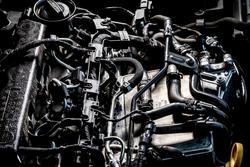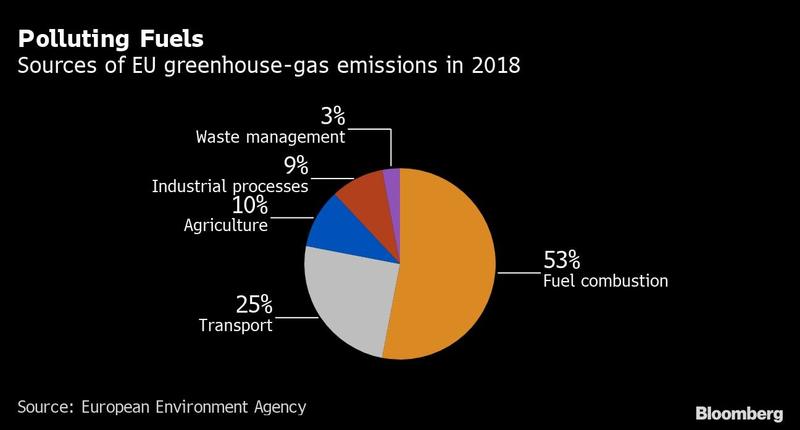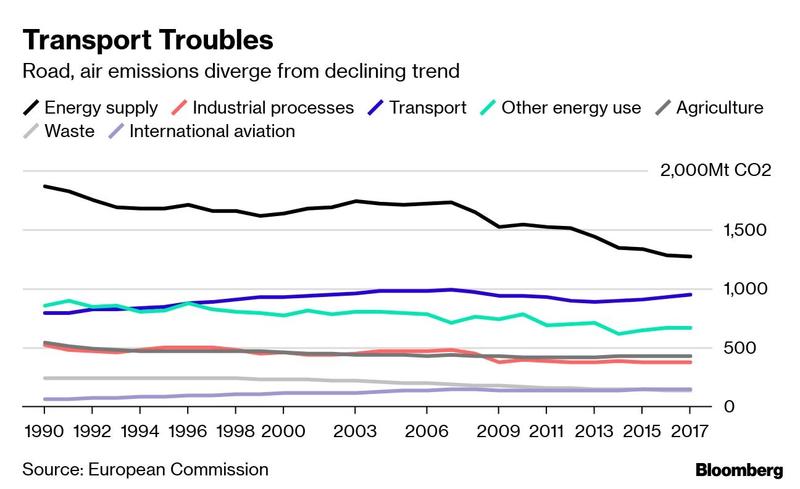 Pipework sits on the diesel engine of a Volkswagen AG (VW) Passat automobile in London, UK. (PHOTO / BLOOMBERG)
Pipework sits on the diesel engine of a Volkswagen AG (VW) Passat automobile in London, UK. (PHOTO / BLOOMBERG)
The European Union’s executive will unveil an ambitious emissions-cut plan this week that’ll leave no sector of the economy untouched, forcing wholesale lifestyle changes and stricter standards for industries.
Under a new climate target for 2030, European automakers would need to embrace tougher pollution standards, with new rules that could retire combustion engines to science museums
Under a new climate target for 2030, European automakers would need to embrace tougher pollution standards, with new rules that could retire combustion engines to science museums. Energy will grow increasingly cleaner, with an additional 350 billion euros (US$415 billion) per year required for investment in production and infrastructure. And to help cut greenhouse gases in agriculture, Europeans would be encouraged to eat less meat.
READ MORE: Climate change report: COVID-19 will not slow global warming
If approved, the new goal to lower emissions in the bloc by 55% from 1990 levels will require buildings to become more energy-efficient, according to a draft European Commission document seen by Bloomberg News. The cost of pollution for companies, already near record highs, is set to rise, as the EU carbon market gets strengthened.
The existing 2030 objective, adopted only six years ago, is a cut in discharges of 40%.
“Reaching a 55% emissions-reduction target will be a significant investment challenge for EU industry, services, transport and energy sectors,” the commission said in the policy paper. “However, the return on investment from meeting this challenge is nothing less than the ability for EU businesses to compete and our citizens to prosper.”

The pandemic exposed the bloc’s vulnerability to global supply chains and imports, giving additional momentum to initiatives that aim at making Europe more resilient and less export-dependent. By boosting renewable energy, the new climate goal would lower the EU’s fuels import bill by 100 billion-euros in 2021-2030 and up to 3 trillion euros by 2050, according to the commission.
While the economic slump doesn’t appear to have undermined the EU’s green resolve, it worsened the conditions for investment in technologies and infrastructure needed to meet the bloc’s ambitious climate goals
While the economic slump doesn’t appear to have undermined the EU’s green resolve, it worsened the conditions for investment in technologies and infrastructure needed to meet the bloc’s ambitious climate goals. A 1.8 trillion-euro package of public funds, agreed by the bloc’s leaders in July to help Europe recover from the coronavirus-induced recession, can only be deployed in projects that don’t undermine climate goals. A third of that sum is to be earmarked specifically for climate-friendly initiatives.
ALSO READ: Crucial role on climate change
“To European decision-makers, raised 2030 climate objectives are an unequivocal signal that new policies and investments should take Europe closer to climate neutrality,”’ said Manon Dufour, head of Brussels office at the E3G environmental think-tank. “To international partners, it shows that Europe continues to prioritize climate as a top political issue.”
The stricter target is set to be proposed as an amendment to a draft EU law that makes the climate-neutrality objective by 2050 binding. It needs approval by the EU member states and the European Parliament, with most factions at the bloc’s assembly backing a more ambitious climate policy.
The planned 2030 goal includes emissions and removals of greenhouse gases from the atmosphere, a design that could alleviate the burden on some sectors. Still, the scale of the climate policy tightening would be unprecedented.

In 2019, EU emissions, including removals, were some 25% below 1990 levels. Measures currently envisaged by member states would lead to just a 41% cut by 2030, according to the commission.
The EU executive arm also wants to submit by the end of this year the new target as the bloc’s updated contribution under the Paris Agreement
Accelerating the pace of emissions cuts in the coming decade would not only put Europe on track to reach climate-neutrality by 2050 but would also make “EU business and industry global trailblazers,” according to the commission. With the existing legislation in place, Europe would cut pollution by 60% in 2050.
Paris Agreement
The EU executive arm also wants to submit by the end of this year the new target as the bloc’s updated contribution under the Paris Agreement. Europe is seeking to encourage other major global emitters, including China, to step up climate action after US President Donald Trump turned his back on the global accord.
Science indicates that climate risks are firmly on the downside, the EU said in the draft document. Greenland broke its 2012 record for ice loss last year by 15%, a startling sign that a major contributor to global sea-level rise may be accelerating. Siberia has baked all year, registering temperatures that would be practically impossible without greenhouse gas pollution and record wildfires.
“Postponing climate action or rolling back measures is not an option for the European Union,” the commission said. “The long-term economic disruptions resulting from inaction would far outweigh the costs of investing in ambitious climate action today.”


